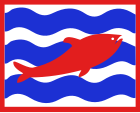The British Expeditionary Force (BEF) was the six-divisions the British Army sent to the Western Front during the First World War. Planning for a British Expeditionary Force began with the 1906–1912 Haldane Reforms of the British Army carried out by the Secretary of State for War Richard Haldane following the Second Boer War (1899–1902).

I Corps was an army corps in existence as an active formation in the British Army for most of the 80 years from its creation in the First World War until the end of the Cold War, longer than any other corps. It had a short-lived precursor during the Waterloo Campaign.
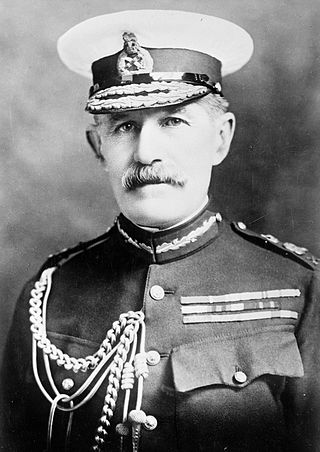
General Sir Horace Lockwood Smith-Dorrien, was a British Army General. One of the few British survivors of the Battle of Isandlwana as a young officer, he also distinguished himself in the Second Boer War.
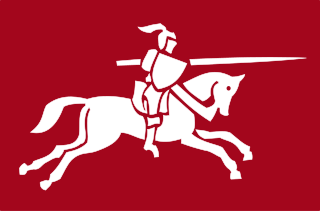
VIII Corps was a British Army corps formation that existed during the First and Second World Wars. In the latter, it took part in the Normandy Campaign in 1944, where it was involved in Operation Epsom and Operation Goodwood. It would later play a supporting role in Operation Market Garden and finish the war by advancing from the Rhine to the Baltic Sea.

IV Corps was a corps-sized formation of the British Army, formed in both the First World War and the Second World War. During the First World War the corps served on the Western Front throughout its existence. During the Second World War it served in Norway and Britain until it was transferred to India, which was threatened with attack after Japan entered the war.

The 4th Infantry Division was a regular infantry division of the British Army with a very long history, seeing active service in the Peninsular War and Waterloo Campaign, the Crimean and Boer Wars and both World Wars. It was disbanded after the Second World War and reformed in the 1950s as an armoured formation before being disbanded and reformed again and finally disbanded on 1 January 2012.
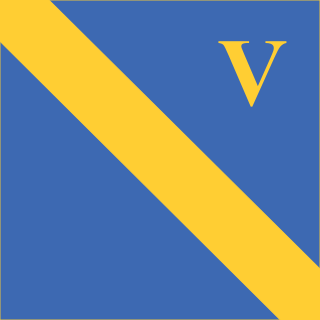
The 5th Infantry Division was a regular army infantry division of the British Army. It was established by Arthur Wellesley, 1st Duke of Wellington for service in the Peninsular War, as part of the Anglo-Portuguese Army, and was active for most of the period since, including the First World War and the Second World War and was disbanded soon after. The division was reformed in 1995 as an administrative division covering Wales and the English regions of West Midlands, East Midlands and East. Its headquarters were in Shrewsbury. It was disbanded on 1 April 2012.
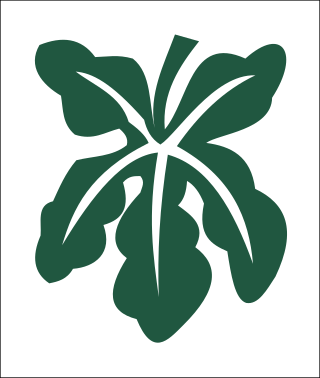
III Corps was an army corps of the British Army formed in both the First World War and the Second World War.

The Lancashire Fusiliers was a line infantry regiment of the British Army that saw distinguished service through many years and wars, including the Second Boer War, the First and Second World Wars, and had many different titles throughout its 280 years of existence. In 1968 the regiment was amalgamated with the other regiments of the Fusilier Brigade – the Royal Northumberland Fusiliers, Royal Warwickshire Fusiliers and the Royal Fusiliers – to form the current Royal Regiment of Fusiliers.

VII Corps was an army corps of the British Army active in the First and Second World Wars. In the early part of the Second World War it was part of the defence forces of the United Kingdom, and later acted as a shadow formation for deception purposes.

The Royal Northumberland Fusiliers was an infantry regiment of the British Army. Raised in 1674 as one of three 'English' units in the Dutch Anglo-Scots Brigade, it accompanied William III to England in the November 1688 Glorious Revolution and became part of the English establishment in 1689.

The 2nd Infantry Brigade was a regional brigade of the British Army, active since before the First World War. It was the regional formation of the Army in the South East of England–the Brigade commanded and administered soldiers throughout Kent, Surrey and Sussex–but also Brunei. In December 2014 the Brigade merged with 145 (South) Brigade to form Headquarters 11th Infantry Brigade and Headquarters South East.

The 29th Infantry Brigade was an infantry brigade unit of the British Army. It was originally raised in 1914 and saw service during the First and Second World Wars and the Korean War.

The Sherwood Foresters was a line infantry regiment of the British Army in existence for just under 90 years, from 1881 to 1970. In 1970, the regiment was amalgamated with the Worcestershire Regiment to form the Worcestershire and Sherwood Foresters Regiment, which in 2007 was amalgamated with the Cheshire Regiment and the Staffordshire Regiment to form the present Mercian Regiment. The lineage of the Sherwood Foresters is now continued by The Mercian Regiment.
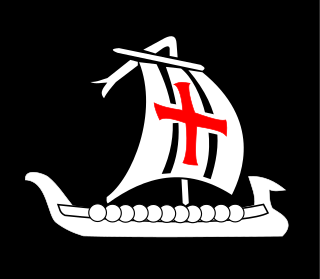
V Corps was an army corps of the British Army that saw service in both the First and the Second World Wars. It was first organised in February 1915 and fought through the First World War on the Western front. It was recreated in June 1940, during the Second World War and was substantially reorganised in 1942 for participation in Operation Torch. It fought through the Tunisia Campaign and later the Italian Campaign.

The British Expeditionary Force order of battle 1914, as originally despatched to France in August and September 1914, at the beginning of World War I. The British Army prior to World War I traced its origins to the increasing demands of imperial expansion together with inefficiencies highlighted during the Crimean War, which led to the Cardwell and Childers Reforms of the late 19th century. These gave the British Army its modern shape, and defined its regimental system. The Haldane Reforms of 1907 formally created an Expeditionary force and the Territorial Force.

Aldershot Command was a Home Command of the British Army.
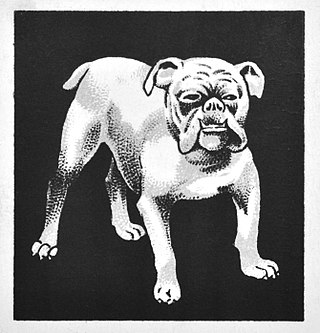
VI Corps was an army corps of the British Army in the First World War. It was first organised in June 1915 and fought throughout on the Western Front. It was briefly reformed during the Second World War to command forces based in Northern Ireland, but was reorganized as British Forces in Ireland one month later.

Lieutenant-General Sir Frederick William Nicholas McCracken, was a British Army officer who saw regimental service in Africa during the late nineteenth century, and later held senior command during the First World War. He commanded an infantry brigade in the British Expeditionary Force (BEF) of 1914, was appointed to command 15th (Scottish) Division in the New Armies from 1915 to 1917, and then briefly commanded XIII Corps on the Western Front before being posted to a home command in the United Kingdom.
The Hampshire Brigade, previously the Portsmouth Brigade and later 128th (Hampshire) Brigade, was an infantry formation of the British Army of the Volunteer Force, Territorial Force (TF) and Territorial Army (TA) in existence from 1889 until after the Second World War. It served in British India during the First World War, but not as a complete formation. During the Second World War, the 128th Infantry Brigade fought in the Tunisia Campaign, in the Italian Campaign, and later in the Greek Civil War. The brigade was composed entirely of battalions from the Hampshire Regiment.
